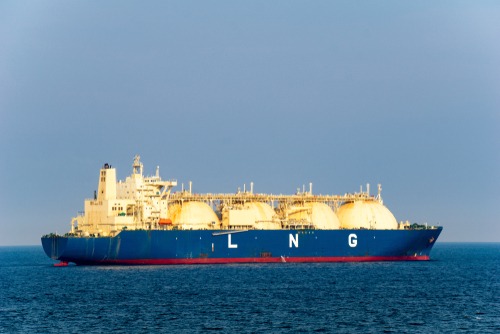
The Liquid Natural Gas (LNG) Task Force met in Philadelphia last week to discuss solutions to increase the export of LNG from Pennsylvania’s ports.
“The state’s rich deposits of natural gas supported nearly 500,000 total jobs across our economy in 2019, generating $78.4 billion toward the state’s gross domestic product, including $40.5 billion added to total labor income. It is critical that we keep this economic engine charging ahead as a benefit for our workforce and for an environment that needs clean energy. Our challenge is to find a way to get the state’s natural gas to the ships in our port,” State Rep. Martina White (R-Philadelphia), the chair of the task force, said.
The session featured several speakers, like former Ohio congressman and Democratic candidate for president Tim Ryan, who said there is increasing demand from countries without natural gas reserves,
“In the absence of natural gas, the world burns dirtier forms of energy, namely coal,” Ryan, who is now co-chair of Natural Allies for a Clean Energy Future, said. “And unless decisionmakers are willing to advance permitting reforms and approve the infrastructure necessary to move natural gas where it’s needed, global carbon reduction becomes harder to achieve.”
Dustin Meyer, vice president of Natural Gas Markets at the American Petroleum Institute (API), talked about the impact of Pennsylvania’s LNG on the global marketplace.
“The United States is now not only the world’s largest producer of natural gas, but we are now also, quite remarkably, the world’s largest exporter of LNG,” Meyer said. “This rapid transformation was fundamentally driven by the shale gas revolution, itself the result of relentless industry innovation and smart, consistent public policy. The epicenter of it was, and remains, right here in Pennsylvania.”
Meyer also discussed the effect Russia’s invasion of Ukraine is having on energy prices, particularly in Europe. The resulting shift from reliance on Russian natural gas to other markets, like the United States, represents the largest shift in global gas markets ever, he said.
“A full, long-term rebalancing of European gas markets will be difficult,” Meyer said. “In the absence of Russian pipeline gas, European LNG imports will need to increase significantly through 2040, even under scenarios in which total European natural gas demand falls
precipitously. U.S. LNG is among the most feasible sources of natural gas to replace the magnitude of Russian gas flows.”
Among other speakers at the meeting was Capt. David Cuff, president of the Pilots’ Association for the Bay and River Delaware, who testified that their ships and pilots can safely do the job.
“The first-class pilots in our association have an average of over two decades of experience piloting ships on the Delaware Bay and River,” Cuff said. “Over the course of which, they have each safely piloted thousands of large ships, including LPG carriers, petroleum tankers, chemical carriers, container vessels, car carriers, and more. The ship-handling skills and local knowledge held by these pilots are second to none in any port in the world.”
In addition, Lisa Himber, president of the Maritime Exchange for the Delaware River and Bay, said that expanding LNG exports through southeast Pennsylvania will create jobs.
“A study of the exchange commissioned in 2021 found that over 156,000 jobs depend on the port, and over 50,000 of those are directly related. The port is responsible for almost $50 billion annually in total economic activity and nearly $2 billion in state and local taxes. Cargo imports are valued at $155 billion and exports at almost $9 billion,” Himber said.